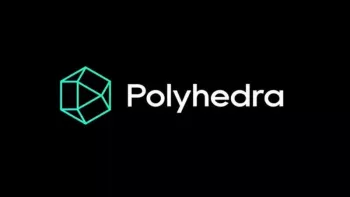In the world of cryptocurrencies, staking has emerged as an increasingly popular way to earn passive income. This innovative process allows users to hold and lock their digital assets in a blockchain network, thereby contributing to its security and consensus. In return, stakers are rewarded with additional tokens. In this article, we will explore the concept of crypto staking, delve into examples like Polkadot (DOT) and Mina (MINA), and discuss the advantages and disadvantages of staking on private wallets versus exchanges such as Binance.
What is Crypto Staking?
Crypto staking involves actively participating in a blockchain network by holding and validating transactions. Rather than mining, which requires substantial computational power, staking relies on a proof-of-stake (PoS) consensus algorithm. In PoS, users with a certain number of tokens can become validators and secure the network by locking their funds. By doing so, stakers are incentivized with additional tokens for their contribution to network security and consensus.
Examples
Polkadot (DOT)
A Leader in Staking: Polkadot is a prominent blockchain platform that aims to enable interoperability between different blockchains. Its native token, DOT, powers the network and plays a crucial role in staking. Polkadot's staking mechanism offers both validators and nominators. Validators are responsible for producing blocks and validating transactions, while nominators delegate their tokens to validators. In return, both validators and nominators receive staking rewards. At the time of writing, the average annual staking yield for DOT is around 12%.
Mina (MINA)
Lightweight and Efficient Staking: Mina, formerly known as Coda Protocol, takes a unique approach to staking. It employs a Snark-based consensus algorithm, which allows the entire blockchain history to be compressed into a small proof size. This makes Mina highly scalable, lightweight, and accessible even on low-capacity devices. Staking on Mina involves delegating MINA tokens to a validator, who then participates in block production and transaction validation. The current staking yield for MINA is approximately 20% annually.
Tezos (XTZ)
Self-Amending Blockchain: Tezos is a blockchain platform that utilizes a self-amending governance mechanism. It allows token holders to participate in the decision-making process regarding protocol upgrades and modifications. Staking on Tezos involves delegating XTZ tokens to a baker (validator), who validates transactions and creates new blocks. In return, stakers receive staking rewards. Tezos has a unique approach called "baking," where bakers are randomly selected to create blocks, ensuring decentralization and security. The current staking yield for XTZ is approximately 5-6% annually.
Cardano (ADA)
Sustainable and Secure Staking: Cardano is a blockchain platform focused on sustainability, security, and scalability. Its native cryptocurrency, ADA, powers the network and enables staking. Cardano's staking mechanism employs a hybrid approach called "Ouroboros," which combines PoS with verifiable randomness. ADA holders can participate in staking by delegating their tokens to a stake pool. Stake pool operators validate transactions and create new blocks, while stakers earn rewards proportional to their stake. The current staking yield for ADA ranges from 4-6% annually.
Pros of Crypto Staking:
- Passive Income: Staking offers an opportunity to earn passive income by simply holding and locking tokens in a blockchain network.
- Network Participation: Stakers actively contribute to the security and consensus of the blockchain, making the network more robust.
- Lower Entry Barrier: Unlike mining, staking requires less computational power, making it accessible to a wider audience.
- Potential Token Appreciation: By staking tokens, users become long-term holders, which can lead to potential price appreciation if the project succeeds.
Cons of Crypto Staking:
- Locked Funds: When staking, users must lock their tokens for a specific period, limiting their liquidity and flexibility.
- Network Risks: Stakers are exposed to the risks associated with the blockchain network they stake in, such as vulnerabilities, bugs, or governance issues.
- Technical Knowledge: Staking often requires a certain level of technical understanding, which may pose a barrier for less tech-savvy individuals.
Staking on Private Wallets vs. Exchanges
Staking can be done either on private wallets or through exchanges like Binance. Staking on a private wallet provides users with full control over their funds and ensures security against exchange hacks. However, it requires technical expertise and comes with the responsibility of managing private keys. On the other hand, staking via exchanges offers convenience and user-friendly interfaces, making it accessible to a broader audience. However, users must trust the exchange with their tokens and are subject to the exchange's terms and conditions.
Crypto staking presents an exciting opportunity for cryptocurrency holders to earn passive income while contributing to the security and consensus of blockchain networks. Projects like Polkadot and Mina have proven to be popular choices for stakers, offering attractive staking rewards. Whether staking on a private wallet or through an exchange, it is essential to carefully evaluate the pros and cons and consider individual preferences, technical capabilities, and risk tolerance. As always, thorough research and understanding are crucial before engaging in any staking activity.
Similar Articles

Uncover the essentials of cryptocurrency token creation in this succinct guide. Learn how to navigate the blockchain landscape, from selecting a platform to testing and launching your digital token. Ideal for both blockchain newcomers and tech-savvy individuals, this article offers a clear pathway to bring your innovative digital currency to life.

Dive into the world of cryptocurrency investments, and explore valuable tips, effective strategies, and key risks to consider when investing in cryptocurrencies.
.webp)
Explore the cutting-edge of Artificial Intelligence (AI) with a deep dive into current AI models, including neural networks, decision trees, genetic algorithms, and deep learning, and see real-world examples of their implementation through platforms such as ChatGPT and Midjourney.

Navigating the complex landscape of Web3, Polyhedra Network emerges as a leader in the development of interoperability, scalability, and privacy solutions. Leveraging advanced Zero-knowledge proof (ZKP) technology, this article provides a glimpse into the network's groundbreaking achievements and forward-thinking product suite designed to transform the Web2 and Web3 ecosystem.






